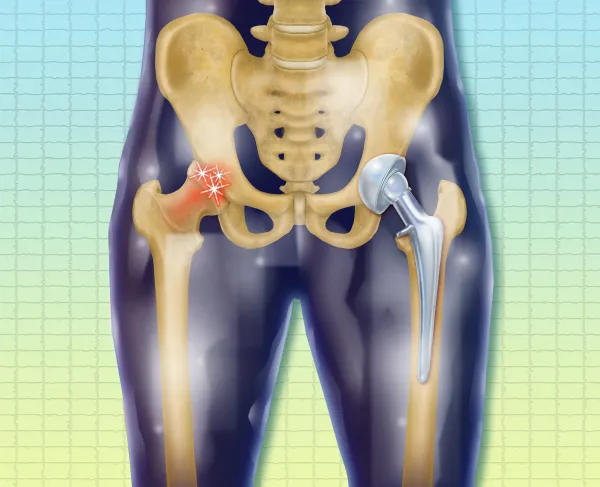Orthopedic Coding Alert
Medicare's 'Code Family' Clemency Has Ended
Denials could skyrocket if your specificity isn’t up to scratch.
So you know CMS and the CDC released the final ICD-10-CM 2017 addenda, which went into effect Oct. 1, 2016. But did you remember that this is also the end of the CMS “grace period” for ICD-10, which prevents MACs from denying claims based on ICD-10 specificity, as long as your code is in the right category, or “family?”
Caution: The end of the grace period may result in an increase in denials if you haven’t been applying the level of specificity ICD-10-CM truly requires, says ICD-10 trainer Monica Smith, RHIT, CPC, CRCR, an associate in Kraft Healthcare Consulting’s compliance services division.
After October 1, 2016, your documentation must have the specificity ICD-10 requires and for that, that you will need the tools you need to find the most specific code.
Connect Related Conditions for Better Coding
Providers need to be specific about the patient’s diagnosis, but they also need to be sure to be clear about whether any co-existing conditions are related, Smith says.
Example: A patient presents to your office in early afternoon, having fallen while riding a skateboard, and you find she has a trimalleolar ankle fracture of her right leg (S82.851A, Displaced trimalleolar fracture of right lower leg, initial encounter for closed fracture). However, she is also a diabetic with numbness in her ankle and foot (E10.40 – Type 1 diabetes mellitus with diabetic neuropathy, unspecified), which can greatly complicate wound healing after ORIF of an ankle fracture.
Begin Applying ICD-10 2017 Now
Even if your coding and documentation were perfect in 2016, you’ll need to put in some work to be sure you can maintain your accuracy rate now that the 2017 changes are in effect.
“Educate and train on the 2017 ICD-10 CM changes,” says Marchelle Cagle, CPC, CPC-I, PCS, of Cagle Medical Consulting in Birmingham, Ala.
Ensure that you’ve ordered your 2017 ICD-10 CM books, Cagle says. The ICD-10 CM changes are also published here: www.cms.gov/Medicare/Coding/ICD10/2017-ICD-10-CM-and-GEMs.html. “The sooner the practice gets to know how any change affects them the better,” Cagle says.
“There are many free webinars out right now to ensure a practice gets ICD-10 CM change training,” Cagle adds.
“Another important thing to remember is to make sure the practice management systems [are] fully updated with the 2017 codes as of Oct. 1. Some software companies have their clients download these files themselves,” Cagle says.
Bonus Tip: Compare Your Denials to Payer Policies
The CMS grace period did not change requirements to follow LCDs and NCDs, so it’s possible you received denials for not adhering to a coverage policy. To get a handle on where your coding and documentation need improvement, review the payer denials coming in now, Cagle advises.
Compare your denials to the coverage information in the LCDs and NCDs for your most frequently performed services, Cagle says. Knowing the coverage requirements and the specificity required for diagnosis coding to support your procedures can be a great help, she says.
Related Articles
Orthopedic Coding Alert
- CPT® 2017:
Get Ready to Apply New CPT® Codes For Spinal Procedures And Devices In the New Year
Location and image guidance are key to coding for spinal interlaminar injections. With the New [...] - Casts:
Q4050 Could Boost Your Claim's Bottom Line — Here's How
But heed payers’ A and Q code preferences — or pay the price. Suppose a [...] - ICD-10:
Medicare's 'Code Family' Clemency Has Ended
Denials could skyrocket if your specificity isn’t up to scratch. So you know CMS and [...] - Hips:
2 Tips Tell You How to Report Hip Dislocations
Search beyond trauma codes for spontaneous and post-THR reductions CPT® and ICD-10 both offer specific [...] - You Be the Coder:
2nd Stage of THR Reimplantation
Question: One of our orthopedic surgeons did a planned reimplantation of a total hip replacement (THR). [...] - Reader Question:
Define Trephination Before Coding This Scenario
Question: What is trephination, and how should I code for an arthroscopic knee trephination? Georgia Subscriber [...] - Reader Question:
Don't Use 99050 When Running Late — Here's Why
Question: If our office hours are 8 a.m. to 5 p.m., Monday to Friday, but the [...] - Reader Question:
Avoid Fracture Care Code When No Fracture Present
Question: If our physician sees a patient in the office and dictates that the patient does [...] - Reader Question:
Go In-Depth With 'Maintenance Therapy'
Question: Our insurers don’t allow us to pay for “maintenance therapy.” But where should our therapist [...] - Reader Question:
October 2016 Brought New Postprocedure Haemorrhage, Hematoma Dx
Question: What are the changes for ICD-10 postprocedure haemorrhage codes for the spinal cord? North Carolina [...]




